As cities statewide grapple with California's housing crisis, one Stanford University grad has come up with an affordable solution for families living in East Palo Alto, North Fair Oaks and Menlo Park's Belle Haven neighborhood by designing ready-made kitchen and bathroom kits that can transform garages into Accessory Dwelling Units for $100,000.
Architect Derek Ouyang is the co-creator of Aduo, a novel "plug-in" garage ADU conversion kit that can be snapped together on-site much like Lego pieces. His team founded Aduo as a nonprofit initiative with the goal of making the kit's assembly, installation and other specifications for a garage conversion open-source materials so others can replicate the process. He describes Aduo as a free instruction manual.
"Existing residential garages may present the single best opportunity to quickly and inexpensively generate new housing for low-income renters — and new wealth for low-income homeowners. However, garage conversions are still challenging and cost-prohibitive for under-resourced property owners in the Bay Area," according to Ouyang, who works as a research manager at Stanford’s Regulation, Evaluation and Governance Lab and also serves as executive director of City Systems, a nonprofit consultancy he co-founded in 2017 to address housing, equity and sustainability issues in local communities. City Systems is the nonprofit leading the Aduo initiative.
Ouyang acknowledges that a garage conversion will take longer than a drop-in prefab, but a backyard ADU typically costs hundreds of thousands of dollars.
He is convinced that Aduo could open the door to second units for the vast majority of single-family parcels. His team is still working to streamline and standardize the Aduo process so it can be easily repeated over and over, saving time and money for nearly anyone who wants to convert their garage.
So far, the team has completed its first prototype in a home in North Fair Oaks and is working on its second project in East Palo Alto, a detached two-car garage.
A 'three-step' process
Ouyang has been documenting their process online to educate the public and make it easy for people to give the team feedback along the way.
According to Ouyang, there are roughly three steps in the Aduo process: Clear out the contents of the garage; prepare the interior with weather-proofing, insulation, and water and electric hookups; and install the Aduo L-shaped kitchen/bathroom module, which he describes as “90% Home Depot or Ikea” cabinets, appliances and a countertop built around a 2-foot by 4-foot L-shaped stick frame.
The module is built off-site and designed to roll right into the garage like a car, he said.
"Just add some last finishing touches, and voila, you have a ready-to-live-in ADU for yourself, your family or to rent out," he said.
The Aduo design stems in part from Ouyang's modular housing experience a decade ago when he was an undergrad student in architecture and civil engineering at Stanford and helped build the demonstration Solar Decathlon House on campus. Ouyang went on to get his masters degree in structural engineering at Stanford and soon zeroed in on the need for more affordable housing in lower-income neighborhoods in the area.
"I started to wonder how legal garage conversions could become the most affordable and accessible form of a housing solution in the Bay Area," Ouyang said.
The first prototype
With backing from Philanthropic Ventures Foundation, the Facebook Housing Innovation Fund and Emerson Collective, Ouyang got rolling on the first Aduo demonstration project in North Fair Oaks. Permitting took close to half a year and the building process took about three months.
Ouyang worked with a local contractor to assemble the kit in a nearby warehouse. It took only two men from the warehouse to load the pieces into the back of a pickup truck and haul them to the site.
During the project, which is documented in a series of videos online, homeowner Bessie Rivera and her mother seem thrilled when they walk through their new ADU for the first time.
“Adding an ADU has been a great thing for our family. It is also a beautiful space with lots of natural light and very nice construction," Rivera said. “My mother is able to have more privacy and welcome visitors and family members in her own space, which she enjoys greatly. "
The one downside, Ouyang noted, is the inconvenience of having to look for a parking spot in the neighborhood because part of the conversion called for filling in the driveway and creating a new curb.
Funding assistance
Ouyang said the first installation cost $150,000, but his aim is to shrink future ones down to $100,000, a cost he sees the CalHome loan program could help qualifying homeowners cover. CalHome loans up to $80,000 for ADU creation to households at or below 80% of the Area Median Income, which currently is about $175,000 in San Mateo County and $181,300 in Santa Clara County, according to the U.S. Department of Housing and Community Development. In East Palo Alto, it is about $104,000.
His nonprofit has been partnering with East Palo Alto Community Alliance and Neighborhood Organization (EPACANDO) to identify potential applicants for garage conversions using Aduo kits.
Iliana Nicholas, program associate at EPACANDO, said Aduo provides an affordable option. Whole detached prefabricated ADUs that are dropped into a backyard using a crane cost around $300,000 to $400,000, she said.
Ouyang said he hopes Aduo's affordability will lead to more people being able to build a legal and permitted living space.
“I’ve seen so many unpermitted units,” said Ouyang, referring to his research at Stanford.
According to a study conducted by Stanford's Regulation, Evaluation and Governance Lab, for every formal permitted ADU that was built in San Jose between 2016 and 2020, it is estimated that seven to eight unpermitted ADUs were built in the same time frame, he said.
Ouyang points out if housing counts are based on official permit numbers, they probably aren’t all that accurate.
He believes his kits could make it easier for homeowners to go through the permitting process and avoid being shut down for code violations, which would lead to more housing, particularly in the communities he has targeted for the Aduo program.
Property owners in East Palo Alto, Belle Haven and North Fair Oaks interested in converting their garages into an ADU, can contact Aduo. The nonprofit is currently accepting applications.
Linda Taaffe contributed to this article.
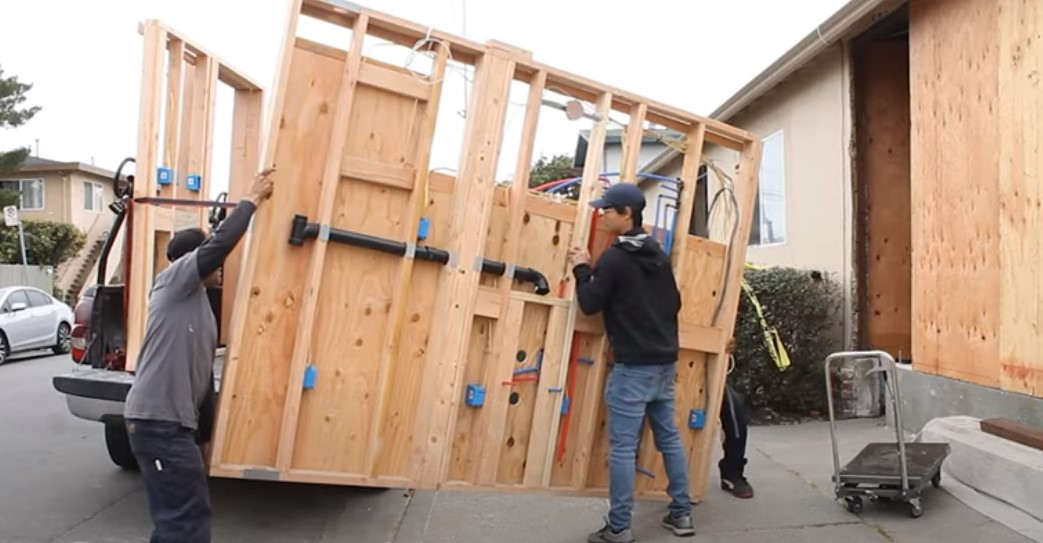
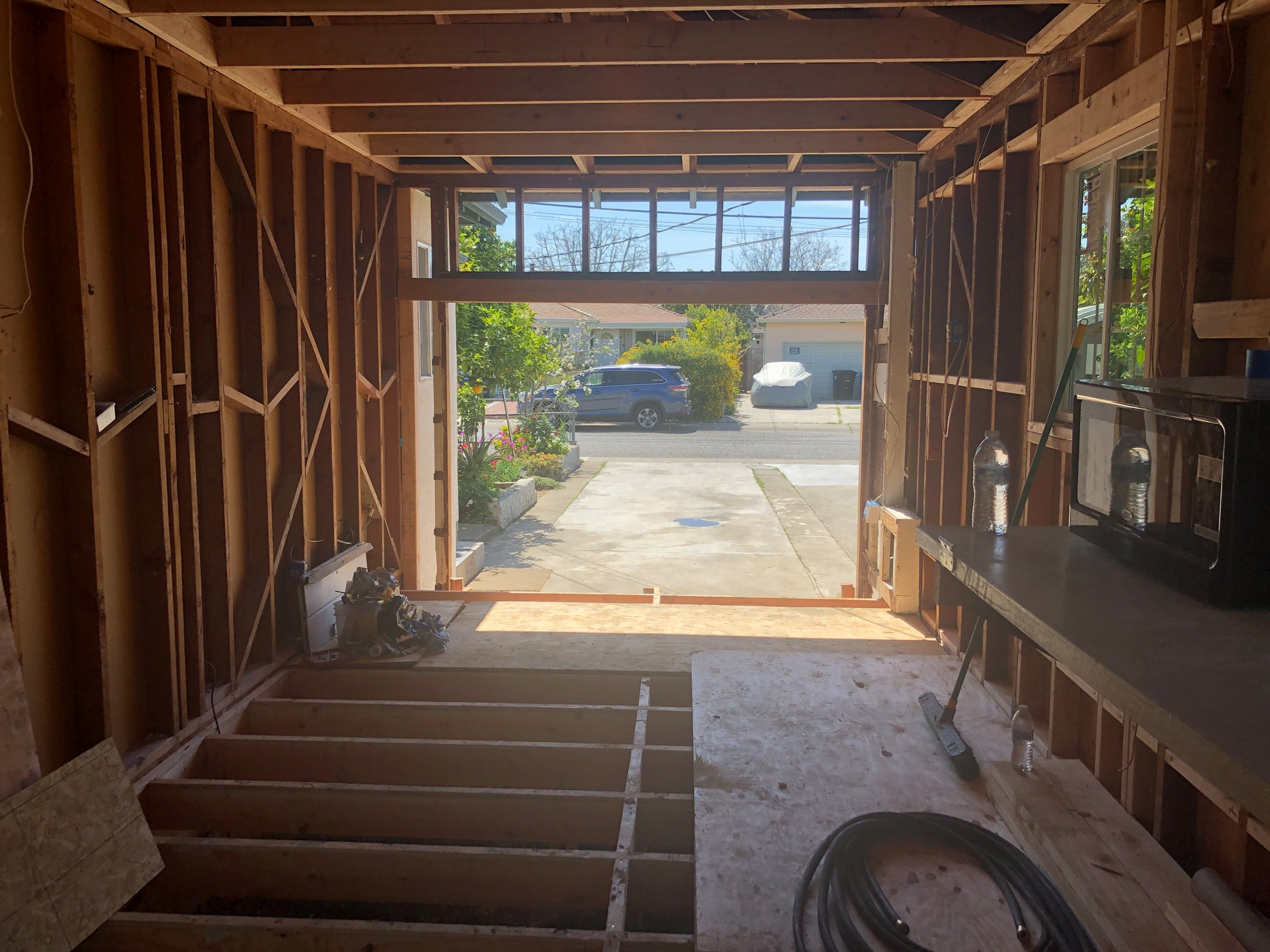
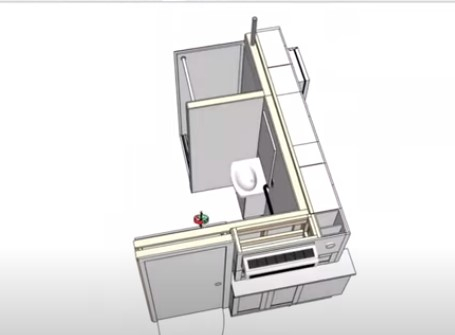


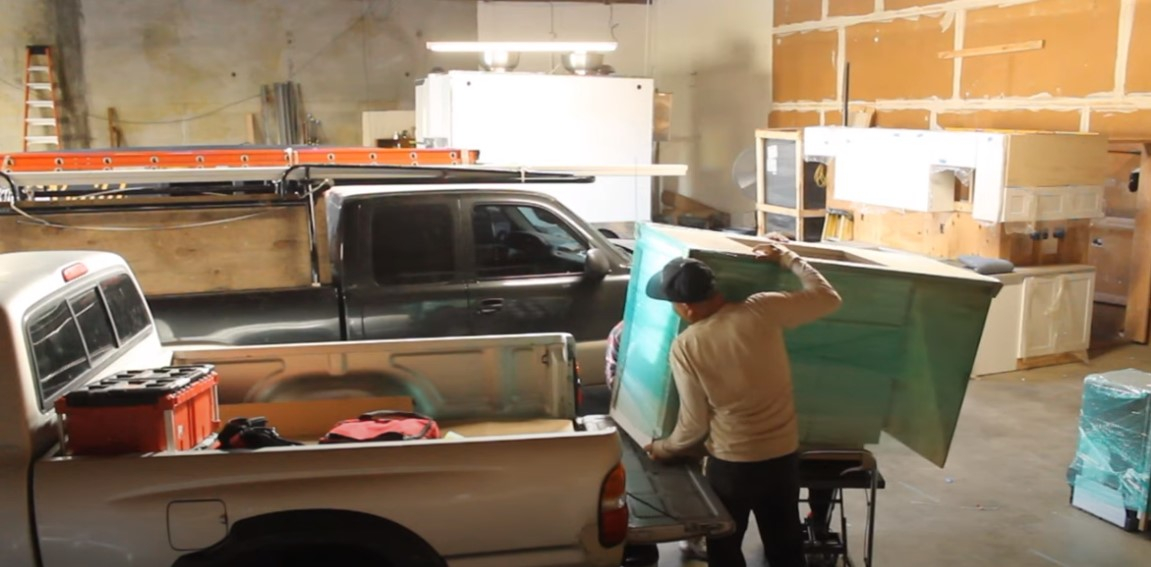

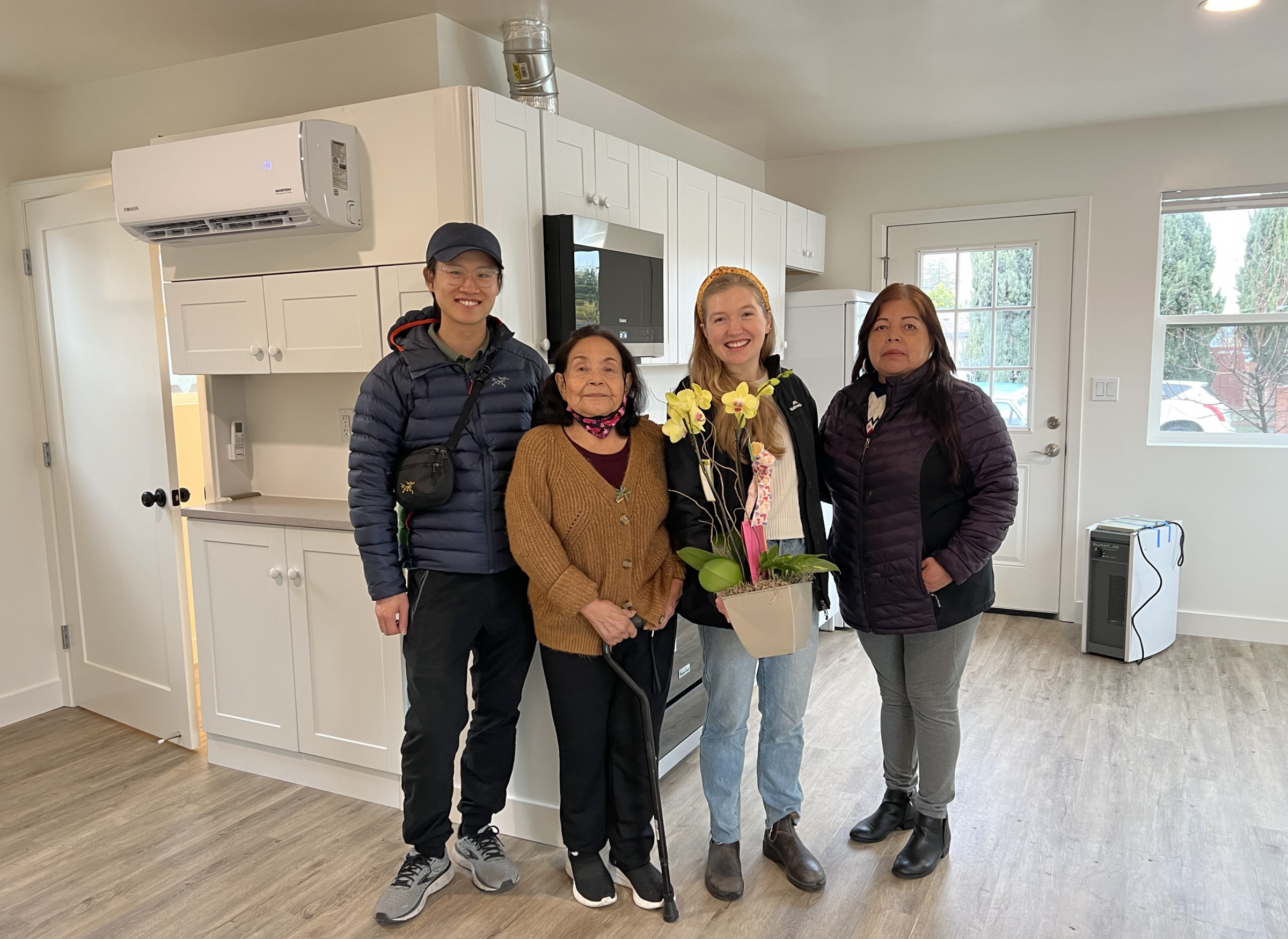


Comments
Registered user
Cuesta Park
on Nov 15, 2023 at 7:40 am
Registered user
on Nov 15, 2023 at 7:40 am
Totally cool, totally needed, totally legal.
That Stanford Solar Decathlon House ended up being a great learning experience not only for VERY GREEN but also very needed low-income basic shelter.
Thanks Mr. Ouyang, for your 'off the clock' innovative non-profit housing work!